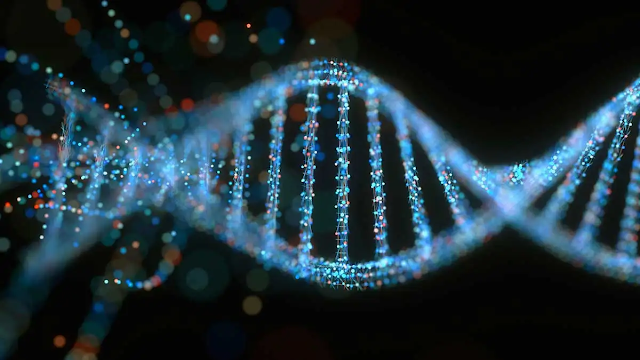Gene Fragments: Unlocking the Building Blocks of Modern Genetic Research
In the world of molecular biology, gene fragments play a vital role in advancing genetic research, biotechnology, and synthetic biology. These short pieces of DNA designed to represent specific genetic sequences allow scientists to explore, modify, and replicate genes with high precision. Whether it’s for cloning, gene synthesis, vaccine development, or protein engineering, gene fragments have become indispensable tools for researchers across the globe.
This article explores what gene fragments are, how they are created, their applications, and why they’re so important in shaping the future of life sciences.
What Are Gene Fragments?
Gene fragments are artificially synthesized or naturally derived segments of DNA that represent a portion of a gene or an entire small gene. Unlike full-length DNA constructs, these fragments are shorter and easier to handle in laboratory settings. They serve as the basic units for assembling larger genetic sequences or testing specific genetic functions.
In simpler terms, think of gene fragments as “custom pieces” of genetic material that can be ordered and used for a variety of experiments much like ordering specific puzzle pieces to complete a bigger picture in genetic research.
How Are Gene Fragments Synthesized?
The creation of synthetic gene fragments typically involves chemical DNA synthesis. Advanced biotechnology companies use automated platforms to produce accurate DNA sequences based on user-provided templates. The process includes:
-
Designing the Sequence:
Researchers provide the desired gene or DNA sequence to be synthesized. -
Chemical Synthesis:
The sequence is chemically built nucleotide by nucleotide, using phosphoramidite chemistry or other synthesis techniques. -
Purification and Quality Control:
Once synthesized, fragments undergo purification to remove impurities and are then verified through sequencing or mass spectrometry to ensure accuracy. -
Delivery and Storage:
The finished gene fragments are delivered in lyophilized (dry) or liquid form, ready for downstream applications such as cloning or PCR.
With recent advances in synthesis technology, scientists can now obtain gene fragments in just a few days, with high fidelity and cost-effectiveness.
Key Applications of Gene Fragments in Research
1. Synthetic Biology and Gene Assembly
In synthetic biology, researchers often build new genetic constructs from scratch. Gene fragments act as the foundation blocks for assembling longer DNA molecules. By stitching together smaller sequences, scientists can create customized genes, metabolic pathways, or even entire genomes.
2. Protein Expression and Engineering
Scientists use gene fragments to express specific proteins in bacteria, yeast, or mammalian cells. This helps in studying protein functions, developing enzymes, or producing biopharmaceuticals. Shorter fragments make it easier to modify protein-coding sequences for desired properties like stability or solubility.
3. Vaccine and Therapeutic Development
Gene fragments are widely used in designing DNA-based vaccines and therapeutic constructs. During the COVID-19 pandemic, gene fragments played a crucial role in rapid vaccine design, allowing scientists to test antigen sequences quickly before final production.
Advantages of Using Synthetic Gene Fragments
-
Speed and Efficiency:
Synthetic gene fragments can be obtained quickly without needing biological templates, saving valuable time in experiments. -
Accuracy:
With automated synthesis and rigorous quality control, these fragments provide high sequence fidelity, reducing experimental errors. -
Customization:
Researchers can design fragments with optimized codons, restriction sites, or mutations tailored to their study.
The Role of Gene Fragments in Modern Biotechnology
Modern biotechnology thrives on the precision and versatility that gene fragments provide. From academic research to industrial biotechnology, they help accelerate discovery and innovation.
For example, pharmaceutical companies rely on gene fragments to test new therapeutic targets, while agricultural biotech firms use them to engineer stress-resistant crops. In personalized medicine, they allow for rapid development of diagnostic tools tailored to individual genetic profiles.
The growing accessibility of synthetic DNA technology means that even smaller labs can now design and obtain custom gene fragments democratizing genetic research like never before.
Future Prospects: Where Are Gene Fragments Heading?
The future of gene fragment technology looks promising. Innovations in enzymatic DNA synthesis, AI-driven sequence optimization, and automation are pushing the limits of what’s possible. Scientists envision a future where complete synthetic genomes can be assembled from small, perfectly designed fragments in hours rather than weeks.
This evolution not only accelerates research but also strengthens our ability to tackle global health, agricultural, and environmental challenges through genetic innovation.
Conclusion
Gene fragments are the unsung heroes of genetic research — compact, precise, and incredibly versatile. They bridge the gap between imagination and experimentation, allowing scientists to create, test, and optimize genetic constructs with ease. As synthesis technologies continue to advance, gene fragments will remain at the heart of breakthroughs in biotechnology, medicine, and synthetic biology.




Comments
Post a Comment